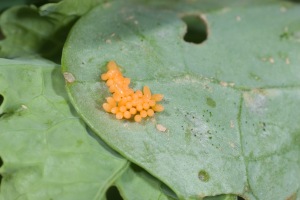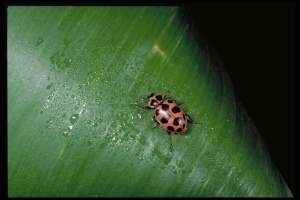If I were to ask a group of producers if they know what a ladybug looks like, without hesitation they would respond ‘of course!’ But I also have had producers ask me to identify ladybugs as there are many different species and a diversity of colors, sizes, and shapes. Some species are even misidentified as pests. Among the natural enemies of vegetable pests, ladybugs are amongst the most commonly encountered in the field.
First, don’t let the name ladybug throw you off; they are not bugs, they are beetles. Because they are beetles we write their name as one word, ladybug. Similarly butterfly is one word as they are not flies. Not all people call them ladybugs, some refer to them as lady beetles or ladybird beetles. I call them ladybugs. There are many different species in Kentucky, some are native, while others are of foreign origin. Generally they are all beneficial except for two that are plant feeders: the squash beetle (Figure 1) and the Mexican bean beetle (Figure 2). These large ladybugs do not feed on insects.
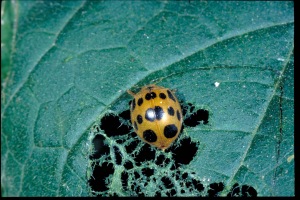
Figure 1. The squash beetle feeds on squash foliage and characteristically cuts a trench in the leaves and feeds within this area. (Photo: Ric Bessin, UK)
The variety of colors and sizes of ladybugs can make their identification more difficult, but no less important. The danger with misidentification occurs when they are thought to be pests and sprays are used for their control. The pink ladybug has been misidentified as a pink cucumber beetle. Cucumber beetles are yellowish-green with black markings and never pink.
Lady beetles are the natural enemies of many insect pests, especially aphids, as well as other soft-bodied and sap feeding pests. A single ladybug can consume hundreds of aphids in its lifetime. The adult female will lay clusters of eggs near prey so that the emerging larvae have food. Some predaceous ladybugs will supplement their diet with pollen, so having flowering plants will help this beneficial group of insects.
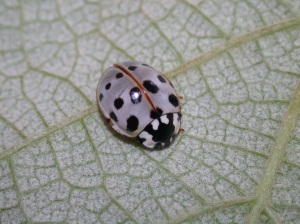
Figure 4. The ash gray ladybug can be found searching for prey on woody plants. (Photo: Ric Bessin, UK)
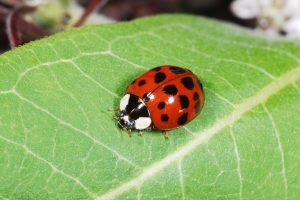
Figure 5. The multicolored Asian ladybug was accidently introduced into the U.S. and is a nuisance in homes during autumn. (Photo: Ric Bessin, UK)
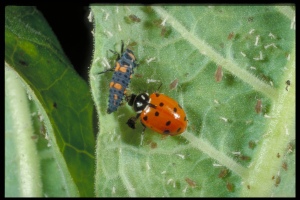
Figure 7. The convergent ladybug is sold commercially (note the ladybug larva in the photo). (Photo: Ric Bessin, UK)
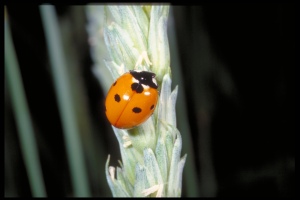
Figure 8. The seven-spotted lady beetle is less common than others but still contributes to pest reductions.(Photo: Ric Bessin, UK)
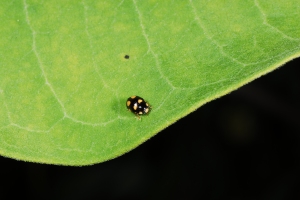
Figure 9. Not all ladybugs are large; this pin-head-sized beetle is reported to feed on aphids. (Photo: Ric Bessin, UK)
By Ric Bessin, Extension Entomologist


